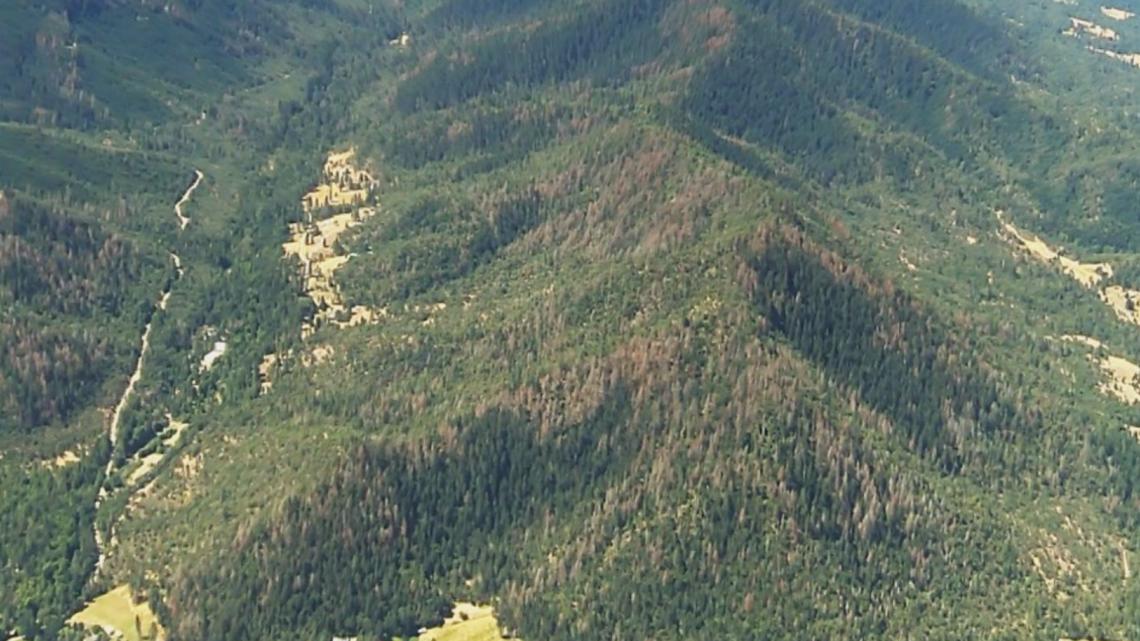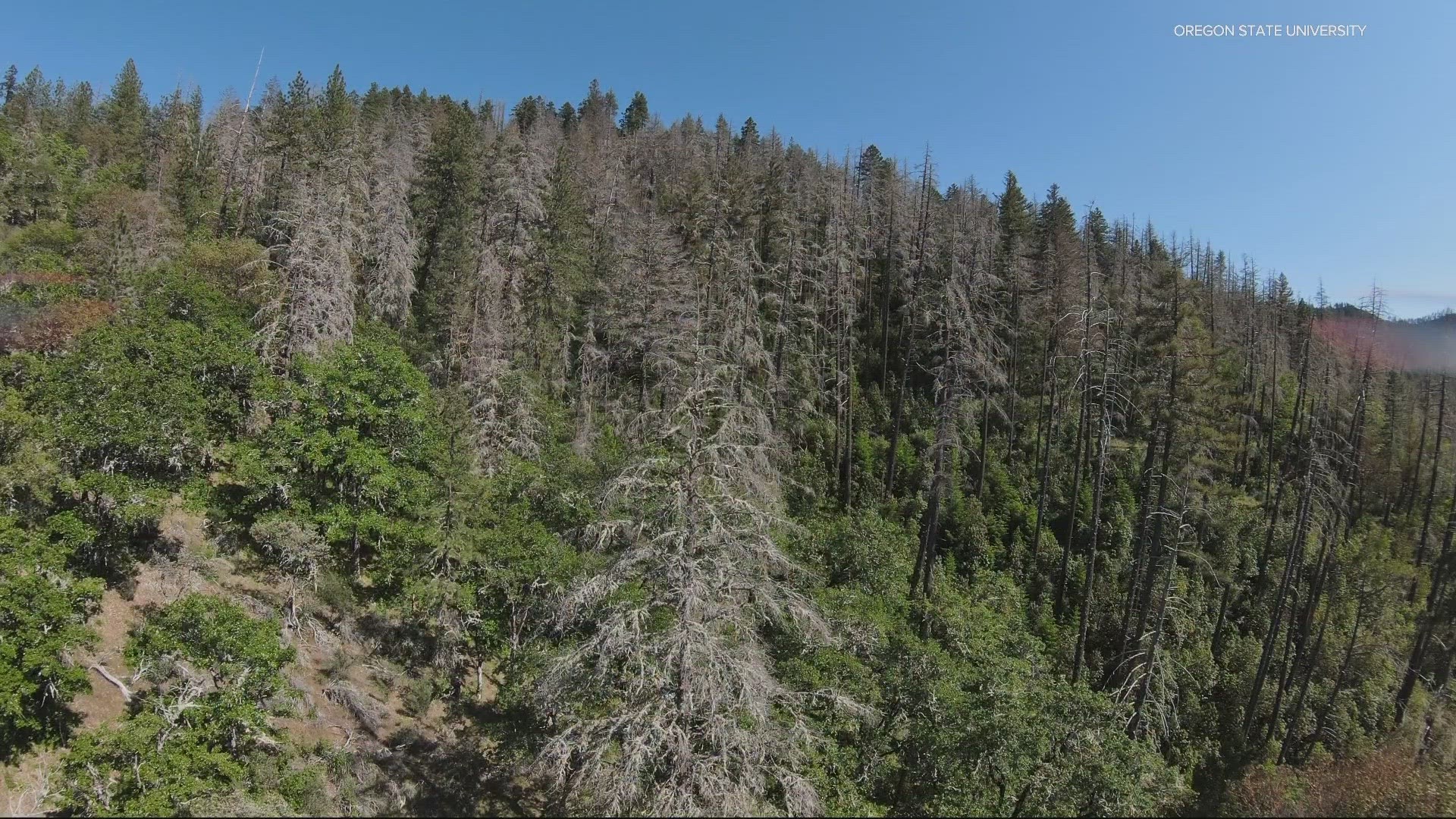MEDFORD, Oregon —
The iconic Douglas-fir has been standing tall in Oregon for many centuries. But the evergreen species isn't doing so well lately, with many trees dying off in parts of the Klamath Mountains of southwestern Oregon.
"In the hills around Medford and the Applegate Valley, which is a little south of Medford, in a lot of places, even up in the Umpqua, for example around Canyonville," said Max Bennet, an Oregon State University extension forester who covers Jackson and Josephine counties.
Bennett led a recent study which estimated approximately a quarter million Douglas-firs had died off between 2016 and 2019, with the die-off getting worse in the years since.
The prevailing theory is that wildfires have cleared the way for Douglas-fir trees to take root in new places, specifically lower elevation, hotter, drier areas.
"And so when a drought comes along, and of course we've had plenty of droughts in the last several years, the trees get particularly stressed for lack of moisture. And they become very vulnerable to various types of insects. And the insects get into the trees and basically finish them off," explained Bennett.
That die-off leads to a cycle spiraling downward as the dead or dying trees add to a buildup of fuels loads in the forest for the next fire.


"We are worried for the future, that this process is going to continue and we're going to see more Douglas-fir die back," said Bennett.
The forester said the good news is there are still tens of millions of Douglas-fir in forestland across the state. That said, the loss of the affected firs is significant; along with increased fire risk, there is the loss of timber, the loss of habitat, and the danger of dead trees around homes, trails, and roadways.
Bennett said forest thinning practices would help, even if it's not possible to get to every stand of Douglas-fir affected.
"But we can certainly do something to improve the situation. If we don't do anything, then we're going to be faced with even more consequences," he said.
The study was done by the Oregon State University College of Forestry and OSU Extension Service. Findings, which include a tool landowners and managers can use to assess a stand of trees’ risk as the climate continues to change, were published in the Journal of Forestry.

